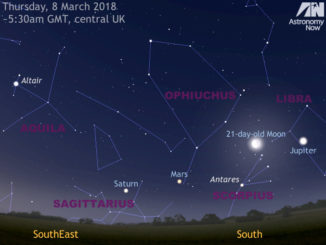
conjunction


See the Moon’s dawn encounters with Jupiter, Mars and Saturn, 7–11 February
Set your alarm for 6am GMT if you wish to see three naked-eye planets in the UK dawn sky this week. Find a location that offers an unobstructed view of the horizon from southeast to south and let the waning Moon be your guide to locating Jupiter, Mars and Saturn on successive mornings from 7 to 11 February.
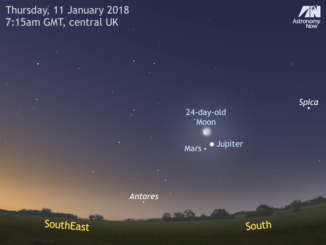
See the Moon and planets gather at dawn
It currently pays to be an early riser if you wish to view the planets, for it’s all happening at dawn in the skies of Western Europe. Find innermost planet Mercury, see a near miss of Mars and Jupiter on 7 January, then a fabulous binocular conjunction of the waning crescent Moon, the Red planet and Jupiter on 11 January!

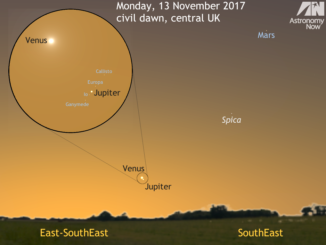
See Venus and Jupiter get close at dawn on 13 November
At the beginning of civil twilight on Monday, 13 November, observers in Western Europe and the British Isles should seek out a viewing location offering an unobstructed view very low to the southeast horizon to see brightest planet Venus and largest planet Jupiter separated by little more than half the width of a full Moon.

See the old crescent Moon meet Venus at dawn on 18 October
Observers in the British Isles and Western Europe should look low to the east about an hour before sunrise on Wednesday, 18 October to see the slim crescent of a very old Moon close to the brightest planet, Venus. Mars is also nearby for the keen-eyed among you, but don’t leave it too late or the growing twilight will drown out the Red Planet.
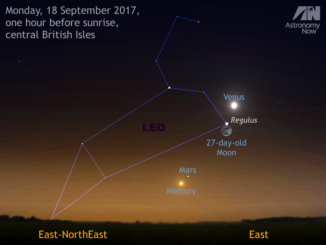
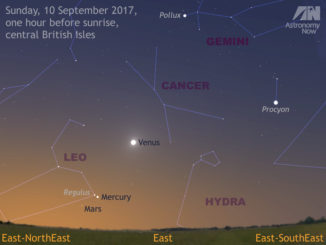
See Mercury meet Regulus and Mars near Venus an hour before sunrise
Observers in the UK and Western Europe should find an observing location offering an unobscured eastern horizon an hour before sunrise on Sunday, 10 September to see innermost planet Mercury just 0.6 degrees from Regulus, the brightest star in Leo. Conspicuous planet Venus is your convenient celestial guide to finding Regulus, Mercury and Mars.

See the International Space Station, Moon and Saturn in the UK sky tonight
The serene beauty of the International Space Station sailing silently overhead needs nothing more than the naked eye to appreciate. But when the dazzling ISS is also in conjunction with a pair of prominent Solar System bodies — such at the Moon and Saturn on the night of 2 August 2017 in the UK — you may wish to grab your binoculars and look low in the south-southwest just before 11:20pm BST.
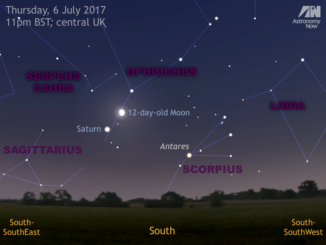
See the Moon meet the ringed planet on the night of 6—7 July
Skywatchers in the UK and Western Europe should cast their gaze low in the southern sky late into the evening of Thursday 6 July to see the 12-day-old waxing gibbous Moon in conjunction with ringed planet Saturn. The pair are separated by just 3½ degrees, nicely framed in a typical 10×50 binocular. For telescope users, the night of 6—7 July is also good for spotting Saturn’s bright moons. We show you what to look for and where.
